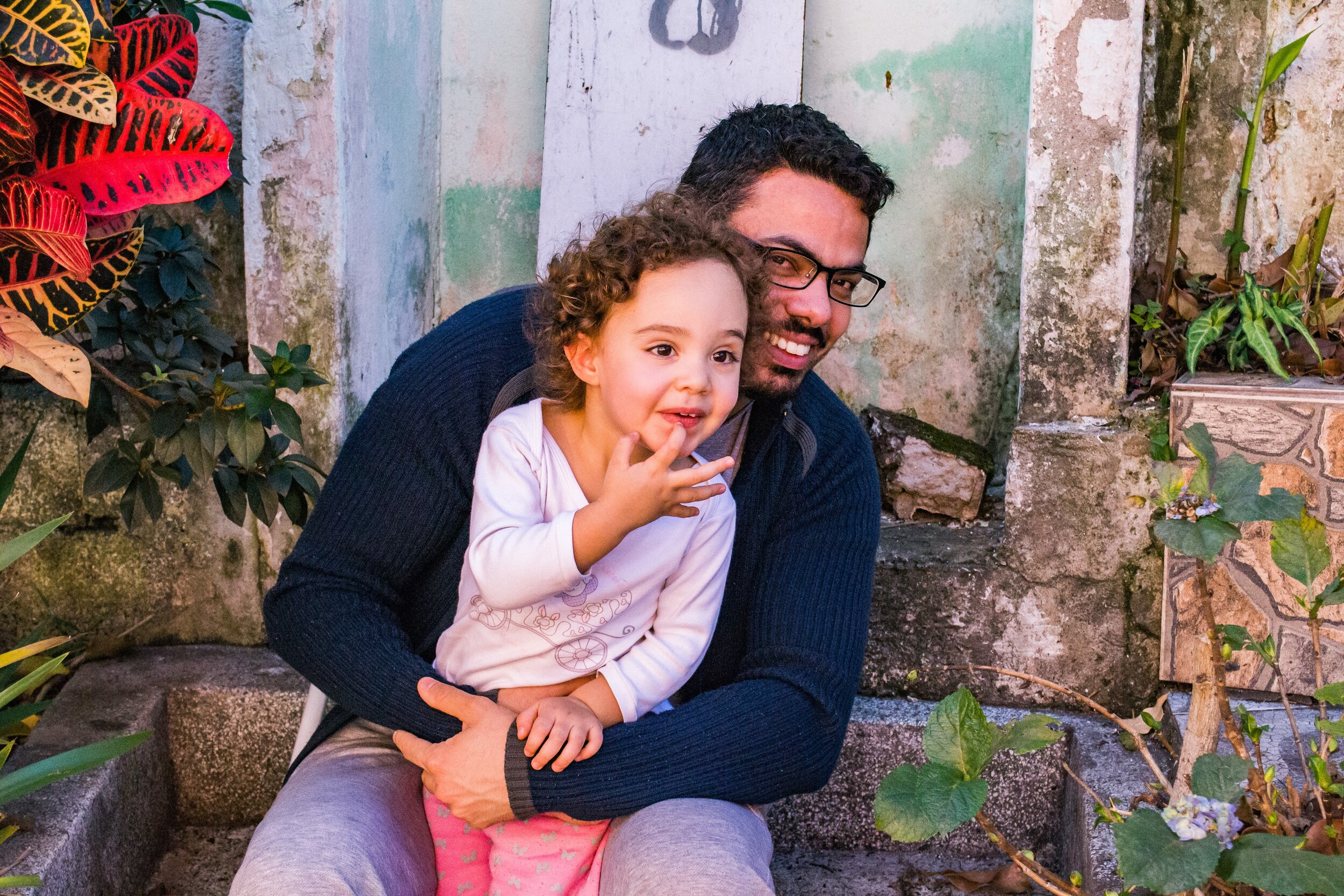The Principles of TBRI
Based on three primary principles to address both environmental and physical needs of children, TBRI sets a foundation for Empowerment, Connection, and correction.
The Empowering Principles
Image Credit: Kiana Bosman
The empowering principle is intended to help create a safe and healthy environment for children. As parents work to create a home of security, they are tasked to not only make sure the child IS safe, but that the child FEELS safe as well. There can be a significant difference in actual and felt-safety for children coming from hard places. By addressing fears and providing evidence, parents can create a powerful sense of felt-safety.
Safe and structured environment
Chronic fear deeply impacts growth and development at both the emotional and cognitive levels. When an environment is created to be predictable and stable, children are able to build trust and develop healthy, trust-driven emotions and behaviors.
As they work on developing a structured environment, parents have three areas of focus:
Daily Transitions - These are the joints that hold your days together. Children from backgrounds of trauma struggle with self-regulation. Simply giving notice of a coming change - “we’ll be leaving the pool in five minutes" - helps set expectations for simple changes and can keep children’s emotions regulated.
Major Life Transitions - Things like the first day of school, new family members, and geographical moves should be carefully communicated and documented through life books, journaling, or storytelling in order to lay out clear expectations, explore feelings, and process emotions.
Developmental Transitions - When the brain transitions from infancy to toddlerhood, or adolescence to adulthood, it provides an opportunity to positively impact development and the neurological system as it pertains to coping, emotional capacity, and organization of processes. Keeping consistency of routine throughout these transitions can help to positively shape a child’s life experience.
Sensory Needs
When children have experienced long-term hospitalization, orphanage care, trauma, and/or pre or perinatal stress, they can develop sensory processing disorders. When not properly addressed, these sensory needs can negatively impact the child’s ability to cope, resulting in poor behavior, limited social and motor skills, and challenged academic performance.
From food selection and sensitivity to texture to the way their socks feel, these children are greatly impacted by the world around them (and things touching them). Their limited capacity for processing and understanding sensation and surroundings can result in negative behavior outbursts.
When properly addressed through the implementation of TBRI practices - caring touch, scheduled and frequent sensory stimulation, intentional activities and experience - children begin to gain the ability to better organize their mental and emotional states.
Nutrition
One of the core factors in behavioral development is diet. When children have been deprived of the proper nutrition - either in utero or after birth - their behavior can become disordered.
The largest impact of this poor nutrition causes significant changes to insulin receptor sites. The challenge is to address the physiological function and impacts of unbalanced blood sugar - which greatly impacts mood and cognitive function - through routine, nutritious snacking and readily available hydration. TBRI research has proven that a systematic approach - offer snacks and water every two hours - helps to balance behavior and improves attention and self-regulation. Further, the simple availability of food and water increases trust and increases felt-safety.
Additional Empowerments
Action and rest are two other impactful empowerment tools that caregivers can employ to help regulate emotions and behaviors in children from hard places. A balance of adequate sleep and physical activity reduces the stress chemical, cortisol, which, in turn, allows children to relax and regulate in healthier ways. It becomes the foundation for the child’s development and regulation.
The Connecting Principles
Photo by Jelleke Vanooteghem
Building secure attachment with children is important for all long-term and/or permanent care givers. The Connecting Principles allow the child/parent experience to thrive using the same processes a mother uses with her newborn child - affection, touch, understanding, and consistent meeting of needs.
Trust Based Relational Intervention teaches us that relationship-based trauma - the absence of tender care from conception on - can only be healed through nurture and connection.
Observational Awareness
Awareness is critical for caregivers as they observe the behavioral and physiological responses of their child. When they are able to recognize arising anxieties and provide comfort, they can give a sense of stability to a child who may not be able to adequately and appropriately express their needs.
Self-Awareness
Caregivers must also be acutely aware of themselves and their own emotional availability and attachment style prior to working with at-risk children. If they harbor unresolved trauma - consciously or subconsciously - they will lack the full accessibility of themselves for their child and may even find themselves triggered by their child’s experience. For example, deep grief for lost children (still birth, miscarriage, and infertility) can limit a mother’s openness in connecting with a foster or adopted child. They must be intentional about their own healing before they can expect true, deep, unrestricted connection with their child.
To help ease the process of TBRI implementation, adults can take the Adult Attachment Interview to help them identify their own attachment style and provide awareness to the emotional “filters” that may influence their perception.
Skills of Attachment
TBRI defines four skills of attachment; giving care, seeking care, feeling comfortable with an autonomous self, and negotiation. These skills address the need for nurture, secure attachment, and foundations of trust. When children are able to feel their voice is heard and their needs are met, caregivers are able to guide behaviors in a positive direction.
Playful Engagement
Play therapy (or Theraplay) uses playful touch and eye contact to build warmth and trust between children and their caregivers. It helps to disarm fear, promote social competence, and build attachment.
By playfully interacting with a child and focusing on their immediate needs, caregivers gain insight on how to redirect negative behaviors playfully, and, in turn, build trust as they gently nurture and guide reactions in a way that makes their child feel safe. Play disarms fear.
Attunement
Attunement is defined as the capacity to “bring into harmony’ or “make aware or responsive.” In TBRI practices, attunement is critical for effective verbal and nonverbal communication between caregiver and child. By matching behavior, voice and inflection, body position, or facial expressions, caregivers foster attachment and felt-safety with their child.
The smallest and most nuanced demonstrations of connection - like choosing the same color of popsicle or to laugh at the same joke - can illustrate to a child that their caregiver relates to and understands their behaviors and choices..
The Correcting Principles
Without intervention, children from hard places will not overcome the challenges embedded into them by their maltreatment. Creating a foundation for development and self-regulatory behaviors takes intentional correction paired with physical and emotional security.
These corrections are aimed at building social competence and can only be implemented after the foundation of empowerment and connection have been established. Based on cognitive behavioral therapy (CBT), corrective principles are divided into proactive and reactive behavioral training and are effective in the improvement of problem-solving and conflict management.
Proactive Behavioral Strategies
Proactive strategies are, essentially, preventative teaching measures that consist of verbal reminders, behavioral rehearsals, role playing, rule-following demonstrations, and the teaching of life value terms that directly address settings where adverse behaviors are likely. Simple directives that allow a child to act through his aggression or programmed behavior in a calm and playful environment before being gently corrected into a “re-do” role-playing help to set expectations for appropriate behavior and respect. When a child can feel the “wrong” and “right” responses and words, and see their caregiver’s response to each behavior, it allows them to quickly develop their intuition and response.
Instruction from caregivers to use words instead of action to express emotion allow for proactive correction as well. The use of life-value terms help to mold a language of mutual respect; things like using respect, making eye contact, using words to replace negative behaviors, being gentle and kind, accepting consequences, accepting “no,” and asking permission. As children receive positive feedback for expressing anger, frustration, and sadness through words instead of actions, and when they see that their needs are being met without problem behaviors, they will develop the sense of safety and connection that will guide them to healthy expression in the future.
Reactive Behavioral Strategies
Even with expert proactive efforts, there will be instances when challenging behavior requires reaction for correction. TBRI practices lead to two response strategies; Levels of Response and the IDEAL Approach.
Levels of Response are designed to match the intensity of the risk or challenge while also maintaining connection with the child:
Level One - Playful Engagement: ·When children present a low-level challenge - like mouthiness or verbal disrespect - caregivers can meet them with a playful retort before guiding the child to rephrase their demand or response with respect.
Level Two - Structured Engagement: If the child doesn’t respond to playful engagement, a caregiver may then employ the use of choices to redirect behavior. “You may either ask with respect, or you may choose to not get what you want.”
Level Three - Calming Engagement: When behaviors continue to escalate, caregivers must be attuned to the direction of the child’s emotional state. Give them a chance to think about what they need and express it in words by guiding them to a calm place, encouraging self-regulation, and engaging in gentle conversation.
Level Four - Protective Engagement - At the highest level, a child begins to exhibit a threat of harm, either to themself or someone else. When this occurs, caregivers must carefully work to contain the child while remaining calm and reassuring. When the child has deescalated, the caregiver should remain with them to reaffirm their child’s sense of security.
At each level, the goal is to always remain connected to the child as you guide them to appropriate behavior, response, and self-regulation. These are not punishment, but regulatory support in an effort to help your child find their voice.
The IDEAL Response is an acronym to guide caregivers through the five principles to be used during times of challenging behaviors.
Respond Immediately - learning is greatest when responses are in direct relation to the behavior.
Respond Directly - use eye contact, give undivided attention, and bring the child physically near during correction.
Respond Efficiently - use the least amount of firmness, corrective effort, and verbal directive that is required. Taking a measured approach illustrates that you will not overreact. (awareness is key here!).
Respond with Action - redirect the child to the appropriate behavior by physically leading them through a re-do. When they are successful, give them lots of praise.
Respond at the appropriate Level - be intentional about responding to the behavior, not the child.
TBRI is a relationship-based model that can be administered by YOU - a nurturing, insightful caregiver. It can be implemented in virtually any environment with children and youth of any age and any risk level. Through sustained and consistent practice, TBRI gives you the tools to create a positive impact in the lives of children and youth who have come from the hard places.



